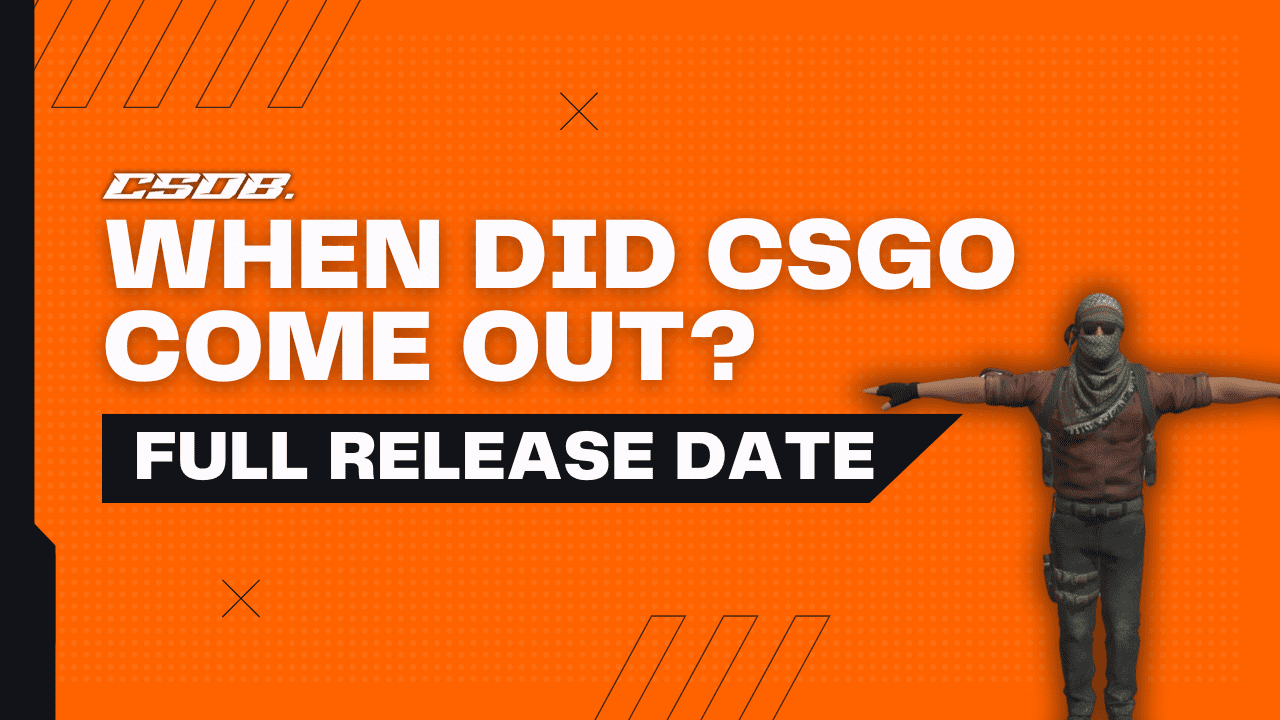CSDB.GG Quick Facts About Counter-Strike’s Release
- 📅 When was it released?: August 21, 2012
- 🎮 What Platforms?: PC, PlayStation 3, Xbox 360, macOS, Linux
- 🔄 Any Major Updates?: Operations, skins, and engine upgrades
- 🔥 Current Version: CS2 (Released in 2023 as a free upgrade to CS:GO)
Throughout its years of being in the mainstream, Counter-Strike: Global Offensive became one of the most respected and influential esports titles in the whole world. The game’s mechanics, particularly its focus on strategic weapon purchases, economy management, and round-based gameplay, laid the groundwork for tactical shooters across various genres. So just exactly when was CS:GO released? Let’s take a look at one of the longest-standing instalments of a franchise that started out as aaa simple Half-Life mod.
Counter-Strike’s Official Release Date & Development
Counter-Strike: Global Offensive was released to the general public on August 21, 2012. It was shipped as the lone successor to both the Counter-Strike: Source and Counter-Strike 1.6 titles with the aim of uniting both sets of players into one main line game. CS:GO was available on Windows, OS X, Xbox 360, and PlayStation 3 on launch, with support for the Linux operating system arriving nearly two years later on September 23, 2014.
Global Offensive stayed true to the franchise with the same principles in mind when it came to gameplay and even kept iconic fan-favorite maps such as Dust 2 and Inferno. New movement mechanics and gunplay were also evident upon release, with many professional players and casual gamers complaining about the evident differences to the Source and 1.6 instalments of the franchise.
What Happened After Release?
Since its release, Valve kept pushing out content updates and optimizations on top of the base game. The Arms Race Operation gave birth to the concept of weapon finishes or skins and the ability to buy and sell them on the Steam market with real life money. CS:GO’s in-game loot boxes called weapon cases were also introduced as the primary way to obtain skins, which provided another avenue for optional microtransactions to those that care about aesthetics.
Music Kits were made available in the game for the first time in late 2014, bringing new flavors to a player’s experience in place of the classic sound Global Offensive was known for. International brands and artists eventually started partnering with Valve to get their sound into the game itself, with many high-profile names sharing their creations with the CS:GO community over time.
How CS:GO Evolved Over the Years
Since its release, CS2 has undergone mutliple changes; including regular updates, new maps, weapons, and mechanics. We have listed here, some of the biggest milestones in Counter-Strike history- Check them out!
2013 – The Year of Skins & Cases
- The Arms Deal Update introduced the first-ever weapon skins (cosmetics) and loot cases to the game-it changed Counter-Strike forever.
- This update transformed Counter-Strike into a major esports and trading economy.
2014-2016 – Competitive Years of Growth & Operations
- Valve introduced the Operations feature, offering exclusive maps and missions.
- Esports tournaments multiplied, with Counter-Strike becoming a top-tier competitive game.
- Counter-strike became free in 2018, attracting even more players.
2020-2023 – The road to a new world: CS2
- 2020: This was the year rumours of a new CS platform were circulating, and had everyone guessing…
- 2023: Valve officially released Counter-Strike 2 (CS2) as a free upgrade to CS users, which included new features such as a new engine, improved physics, and enhanced graphics.
🚀 CS2 became the primary version of Counter-Strike, replacing CS:GO entirely-and completely for the better!
The Impact of CS:GO on Esports & Gaming
Counter-Strike really did revolutionise the world of PC competitive first-person shooters (FPS), and opened the doors to the following:
- International Esports Tournaments: CS Majors became some of the biggest events in gaming.
- A Multifaceted Skin Economy: The Steam Market and third-party sites facilitated billions of dollars in trading.
- An Unmatched Competitive Scene: The matchmaking and ranking system shaped modern FPS gaming.
With the transition to CS2, the legacy of CS:GO continues, ensuring the franchise remains at the top of the esports industry.


